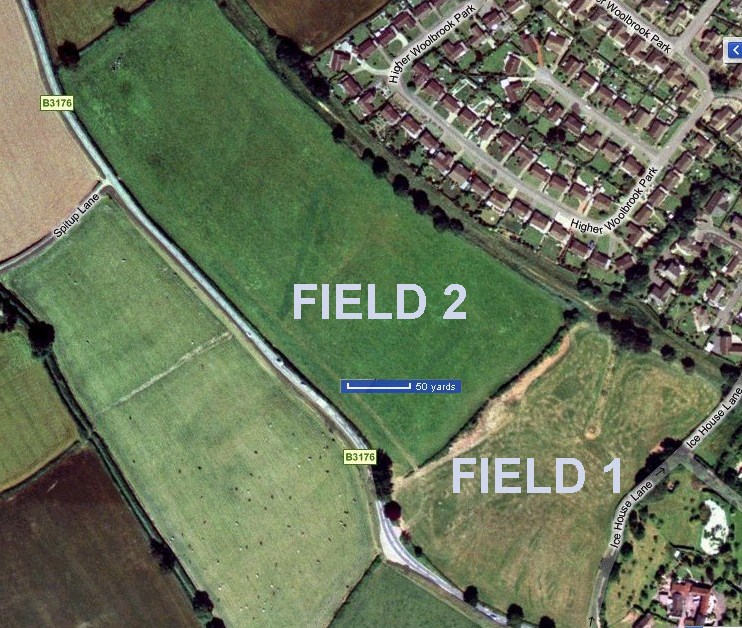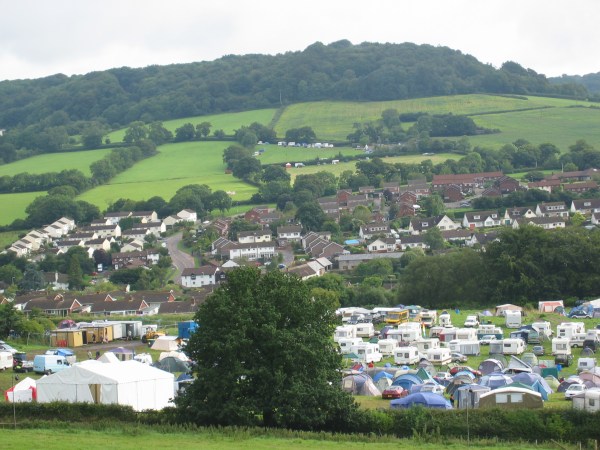 |
Field 1 of the main Bulverton campsite, viewed
from the walkway down from the Bulverton marquee. The private Corehill campsite to the north of the A3052 can be seen beyond
the houses, at the top centre of the picture. This is a quieter site, and with good access
to Waitrose. Otherwise - it would seem to have few attractions, apart from less mud.
Other, more established caravan and
camping sites some miles from Sidmouth are preferred by many folkies - which is a
shame because the festival loses campsite revenue. Thorn Park campsite has run its own
'fringe festival' events since 2009. |
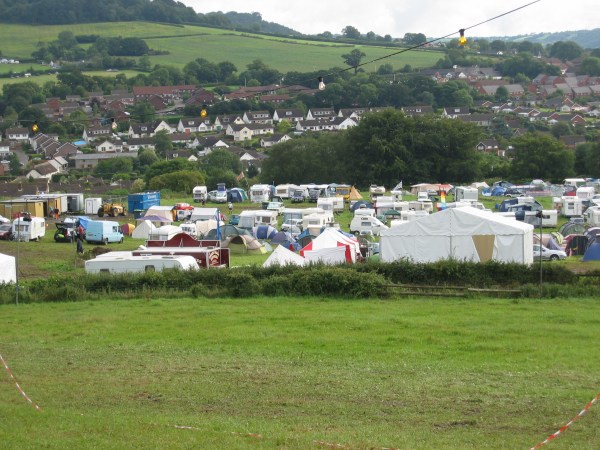 |
Slightly different view of field 1. The walkway down from the Bulverton (foreground) doesn't look too trodden or
treacherous but great care was needed, even on this relatively shallow slope. |
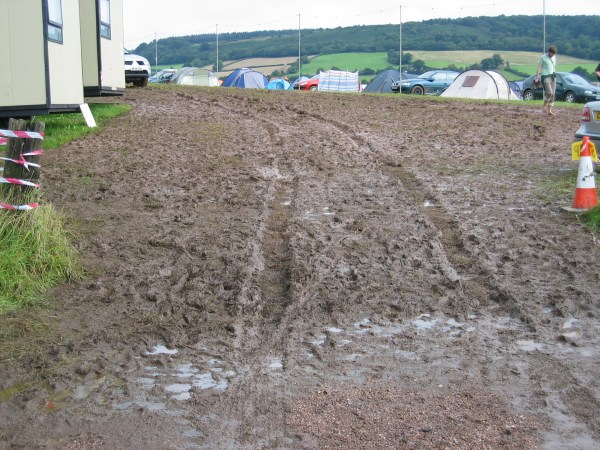 |
The slope up into field 2 from field 1. This
does not have a stone base and can rapidly become impassable. Apparently, difficulties of access precluded some of the best motorhome and
caravan spaces being filled in 2009.
This was curious - the festival website had stated for
months that all motorhome spaces had been booked. So where did they all go? Presumably on
field 1 with tents being taken on wheelbarrows into field 2.
Who would be a campsite manager?
|
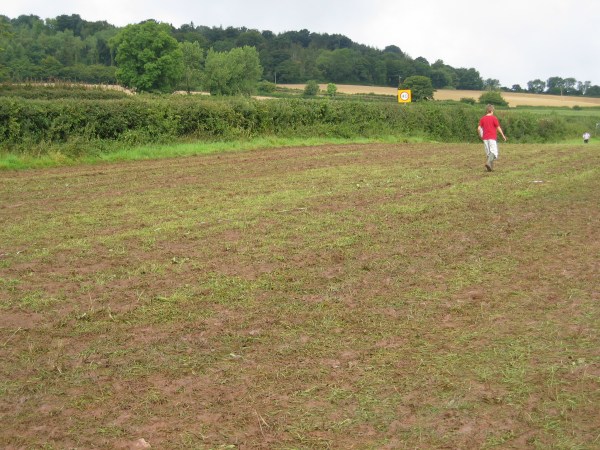 |
The top end of field 2. These are some of the most highly prized motorhome spaces along the main
road, with only gently sloping pitches and excellent views - and none of them filled in
2009.
What a pity!
Some better forward planning for difficult weather might
have resulted in a higher occupancy of motorhome spaces and much additional revenue for
the festival.
A similar photo from 2010 shows this
area as it should have been! |
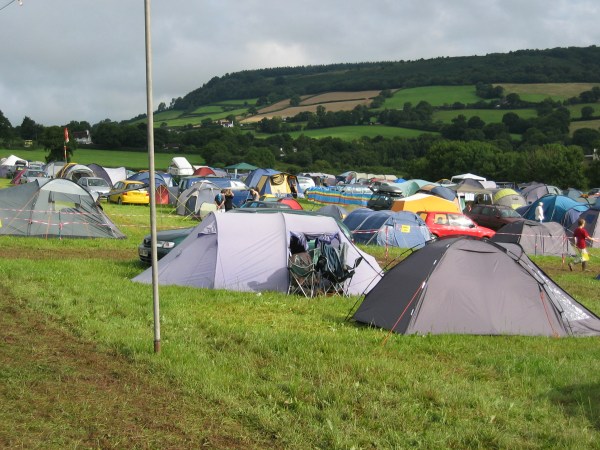 |
The main part of field 2 - and on a steep slope. In
previous years this was covered in caravans - and therefore unsafe because of all the
tents located lower down the field.
Sensibly, most drivers parked their cars across the slope -
as they had been told to do in 2008.
In severe weather one year, cars were apparently removed
because they were starting to slide down the hill even with their brakes on - which seems
a tall story even for this campsite! |
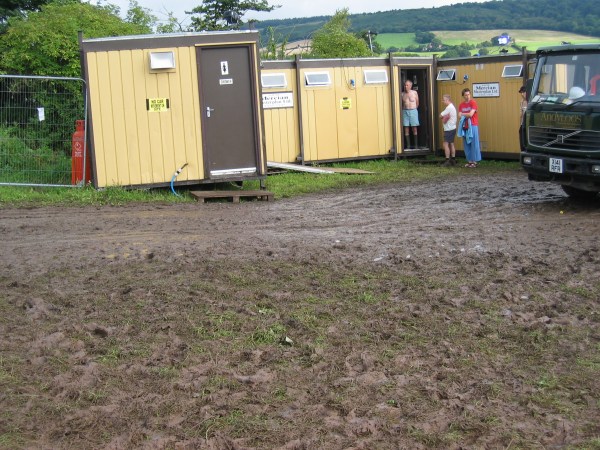 |
The WC and shower blocks on field 1. These were beside the main access track, which had a stone base and
remained passable for the WC emptying lorry (right of picture).
However, the disadvantage of this layout is that people
wanting a shower had to walk across one of the most used and muddy areas of the site.
Many had no qualms about taking a large quantity of mud into
the showers - and leaving it there for future users. There were some complaints. |
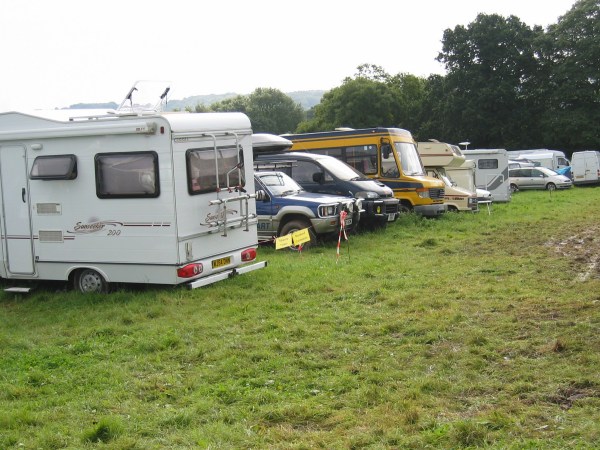 |
The lower part of field 1. On Caravan Club and other permanent sites, outfits have to be 3
metres apart to provide fire-breaks. On temporary sites, there are fewer rules.
Some festivals (for example Chippenham) mark out pitches in
advance. Their site is one of most organised in the UK.
At Warwick, site notes say that outfits must be 3m apart -
but the festival could not operate if this was enforced.
As a compromise, Warwick use 6 metre wide roadways, so (they
claim!) two fire engines can get to an incident side by side! |
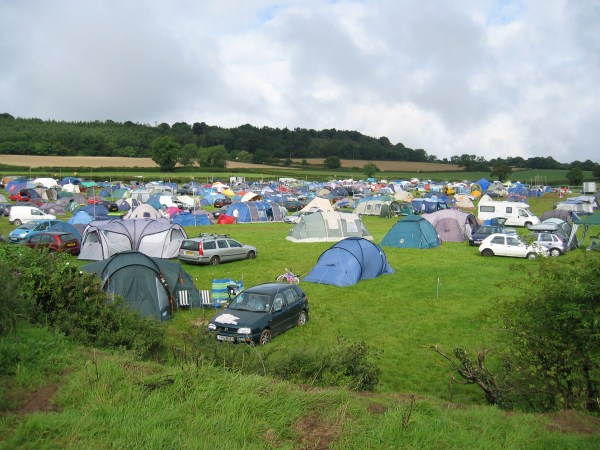 |
The second field, viewed from the first - which
is here at a higher level. This lower corner
of field 2 is quite flat - suitable for motorhomes or tents. But you have to get there,
which is via the slope from field 1 and then down the steep parts of field 2.
On wet grass or liquid mud, even a slight slope can defeat a
caravan towed by a two wheel drive car.
In the sunshine, it all looks idyllic!
A disabled attendee commented it is
not really suitable for everyone. Many campsites are less demanding!
|
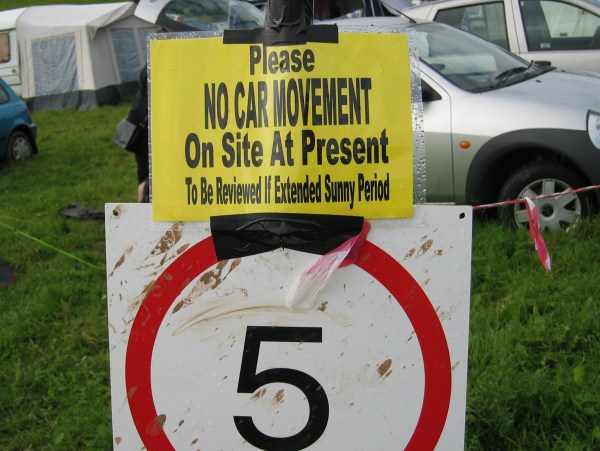 |
As if anyone would have tried? After Tuesday's rain, most people were simply grateful their car was still
where they had left it.
The festival has sought views on making the campsite a 'no
car movement' zone even in good weather.
This would certainly make it safer - many drivers do not
obey campsite speed restrictions - and not only at Sidmouth.
The slope on parts of the Bulverton campsite makes fast
driving particularly dangerous when on wet grass or mud. |
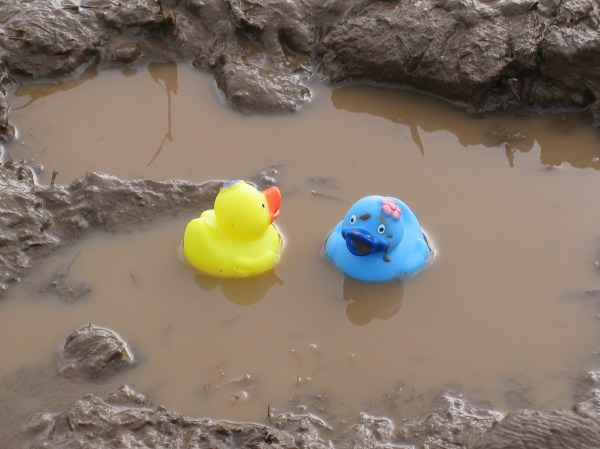 |
I was informed that these two visitors had
flown in the previous night. They appeared to
have adapted well to their new home in a small pond adjacent to the campsite managers
office - and this was after several days of reasonably good weather.
Perhaps they had had enough of the heat wave in central
Europe?
Higher resolution jpgs of most 2009
photos are available upon request - email. |
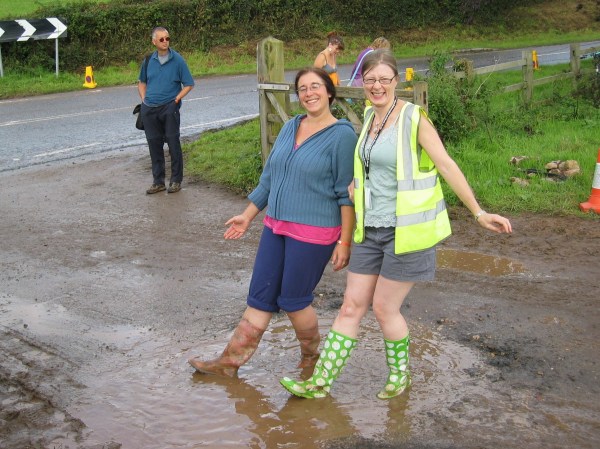 |
Campsite manager Issy Fremont (on the left) and
Clare Symms, one of her colleagues. Girls will be girls, and this pair insisted on a
photo-shoot in the campsite foot spa. The
cheerfulness of these stewards seemed to epitomise the whole atmosphere of the campsite.
Even campers who were hanging up soaked mattresses to drip
dry seemed remarkably sanguine. The sunshine probably helped.
The water was tested daily for bacteria and suspended solids
by EDDC's Environmental Health Officers. The results have not been published - which is
perhaps just as well. |
